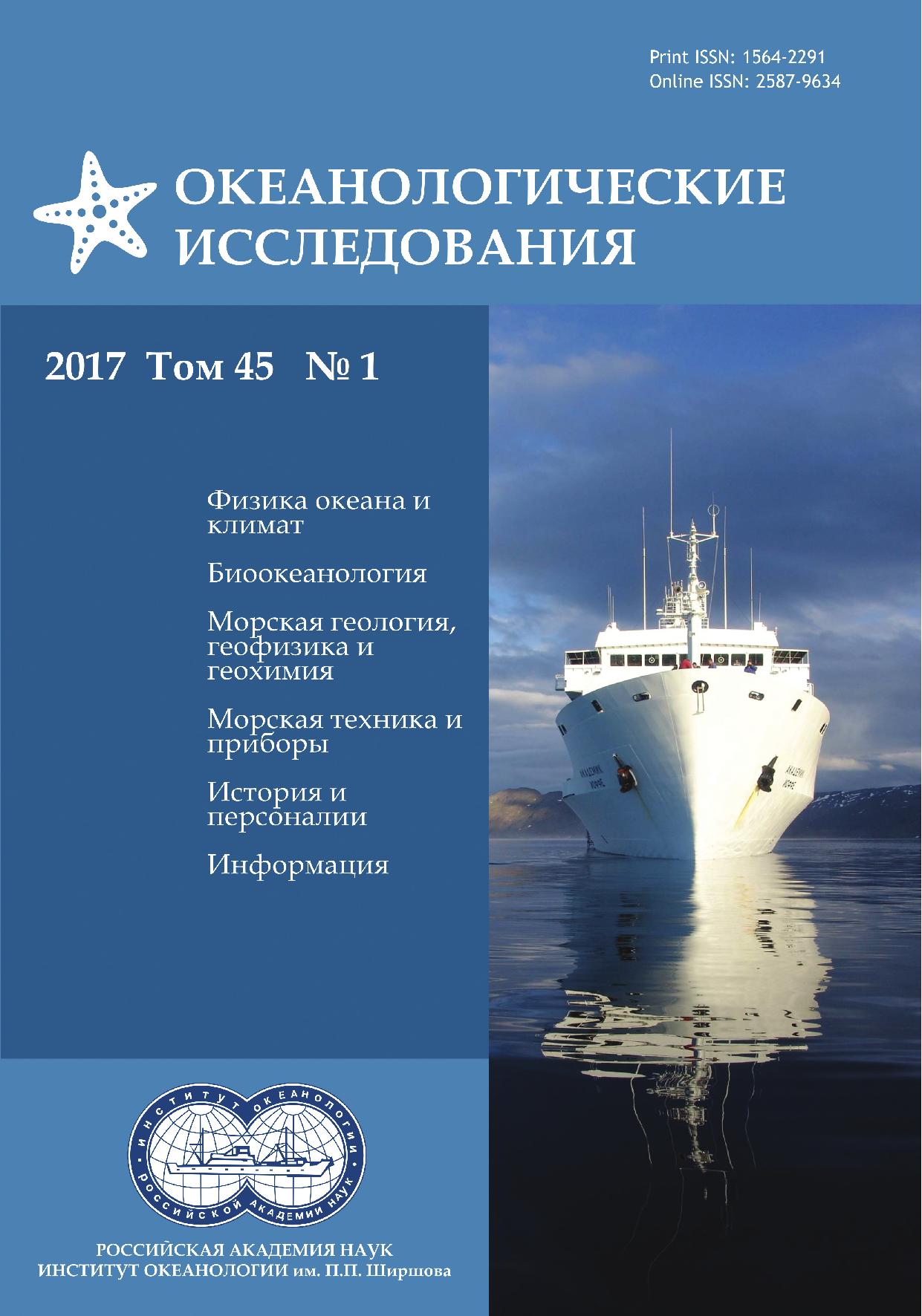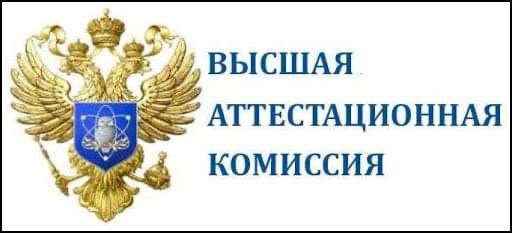Моделирование процессов распространения взвешенного вещества в морских прибрежных акваториях: 1. Описание ВВ-модели
Аннотация
Рассмотрена методика разработки математической модели для изучения распределения концентраций взвешенного вещества в прибрежных морских акваториях. Эта модель оценивает последствия дноуглубительных работ (нарушений естественного состояния морской среды для биоресурсов), она воспроизводит образование взвешенного вещества и его последующий перенос в водной среде в мелководных морских заливах и морских прибрежных акваториях. Эта задача решается в два основных этапа: сначала проводится численное интегрирование системы уравнений гидродинамики (уравнений теории «мелкой воды») и определяются значения средних по глубине составляющих скорости течения; и на втором этапе – интегрируется система уравнений турбулентной диффузии, учитываются процессы седиментации взвешенного вещества, взмучивания донных отложений, поступления взвеси из распределенных точечных источников, их перераспределения в водной среде и накопления остаточных количеств на дне.
Литература
- Архипов Б.В., Котеров В.Н., Кочерова А.С., Солбаков В.В., Хубларян Г.М. Расчет распространения взвешенных веществ в прибрежной области моря // Водные ресурсы. 2004. Т. 31. № 1. С. 31– 39.
- Афанасьев С.В., Рянжин С.В. Численное моделирование горизонтальной турбулентной диффузии в мелком озере // Вод.ресурсы. 1986. Т. 13. № 1. С. 87–94.
- Баклановская В.Ф., Пальцев Б.В., Чечель И.И. О краевых задачах для системы уравнений Сен-Венана на плоскости // Журн. вычисл. матем. и матем. физ. 1979. Т. 19. № 3. С. 708–725.
- Клеванный К.А., Смирнова Е.В. Использование программного комплекса CARDINAL для решения задач гидравлики // Журн. Университета Водных коммуникаций. 2009. Вып. 1. С. 153–162.
- Леонов А.В. Моделирование природных процессов на основе имитационной гидроэкологической модели трансформации соединений C, N, P, Si. ЮжноСахалинск: СахГУ, 2008. 168 с.
- Лисицын А.П. Маргинальный фильтр океанов // Океанология. 1994. Т. 34. № 5. С. 735–747.
- Лисицын А.П., Баренблатт Г.И. Гидродинамика и осадкообразование. М.: Наука, 1983. 232 с.
- Марчук Г.И. Методы расщепления. М.: Наука, 1988. 264 с.
- Марчук Г.И., Дымников В.П., Залесный В.Б. Математические модели в геофизической гидродинамике и численные методы их реализации. Л.: Гидрометеоиздат, 1987. 296 с.
- Матишов Г.Г., Макаревич П.Р., Дженюк С.Л. и др. Морские нефтегазовые разработки и рациональное природопользование на шельфе. Ростов-на-Дону: Изд-во ЮНЦ, 2009. 500 с.
- Методические указания по расчету распространения зон мутности при дноуглублении и дампинге на акваториях ВМФ. М.: МО РФ, 2003. 80 с.
- Подгорный К.А. Математическое моделирование пресноводных экосистем нестратифицированных водоемов (алгоритмы и численные методы). Рыбинск: Изд-во ОАО “Рыбинский Дом печати”, 2003. 328 с.
- Подгорный К.А., Леонов А.В. Использование пространственно-неоднородной имитационной модели для изучения процессов биотрансформации соединений азота, фосфора и динамики растворенного в воде кислорода в экосистеме Невской губы Финского залива. 1. Описание модели // Водные ресурсы. 2013а. Т. 40. № 2. С. 179–191.
- Подгорный К.А., Леонов А.В. Использование пространственно-неоднородной имитационной модели для изучения процессов биотрансформации соединений азота, фосфора и динамики растворенного в воде кислорода в экосистеме Невской губы Финского залива. 2. Входные данные для расчетов, результаты моделирования и их анализ // Водные ресурсы. 2013б. Т. 40. № 3. С. 240–258.
- Руховец Л.А. Математическое моделирование водообмена и распространения примесей в Невской губе // Метеорол. и гидрология. 1982. № 7. С. 78–87.
- Рябченко В.А., Румянцев В.А., Коноплев В.Н. и др. Оценка изменения качества воды Невской губы после введения в эксплуатацию юго-западных очистных сооружений Санкт-Петерурга (по данным математического моделирования) // Изв. Русского Географического Общества. 2006. Т. 138. Вып. 5. С. 48–57.
- Рянжин С.В., Тержевик А.Ю., Афанасьев С.В. и др. Гидродинамический режим и условия накопления донных осадков // Сохранение природной экосистемы водоема в
урбанизированном ландшафте. Л.: Наука, 1984. С. 83–92. - Самарский А.А., Вабищевич П.Н. Аддитивные схемы для задач математической физики. М.: Наука, 1999а. 320 с.
- Самарский А.А., Вабищевич П.Н. Численные методы решения задач конвекции–диффузии. М.: Эдиториал УРСС, 1999б. 248 с.
- Amoundry L. A review on coastal sediment transport modelling // Proudman Oceanographic Laboratory. Internal document No. 189. 2008. 44 p.
- Ayukai T., Wolanski E. Importance of biologically mediated removal of fine sediments from the Fly River plume, Papua New Guinea // Estuarine Coastal Shelf Sci. 1997. Vol. 44. P. 629–639.
- Cebeci T. Turbulence models and their application: Efficient numerical methods with computer programs. Long Beach, California: Horizons Publishing Inc., 2004. 118 p.
- Chao X., Jia Y., Shields Jr. F.D., et al. Three-dimensional modeling of cohesive sediment transport and wind wave impact in a shallow oxbow lake // Adv. Water Res. 2008. Vol. 31. P. 1004–1014.
- Chubarenko I., Tchepikova I. Modelling of man-made contribution to salinity increase into the Vistula Lagoon (Baltic Sea) // Ecol. Modelling. 2001. Vol. 138. P. 87–100.
- Davies A.M., Lawrence J. Examining the influence of wind and wind wave turbulence on tidal currents, using a three-dimensional hydrodynamic model including wave-current interaction // J. Phys. Oceanogr. 1994. Vol. 24. P. 2441–2460.
- Einstein H.A., Krone R.B. Experiments to determine modes of cohesive sediment transport in salt water // J. Geophys. Res. 1962.Vol. 67. P. 1451–1461.
- Eisma D. Flocculation and de-flocculation of suspended matter in estuaries // Neth. J. Sea Res. 1986. Vol. 20 (2/3). P. 183–199.
- Fahmy O., Fassieh K.M., Zaki M.A. A numerical model of the wave-induced currents in the turbulent coastal zone // ISRN Civil Engineering. 2013. Vol. 2013. P. 1–7.
- Fugate D., Friedrichs C.T. Controls on suspended aggregate size in partially mixed estuaries // Estuarine Coastal Shelf Sci. 2003. Vol. 58. P. 389–404.
- Glenn S.M., Grant W.D. A suspended sediment stratification correction for combined waves and current flows // J. Geophys. Res. 1987. Vol. 92 (C8). P. 8244–8264.
- Graf W.H. Hydraulics of sediment transport. New York: McGraw-Hill, 1971. 513 p.
- Grant W.D., Madsen O.S. Combined wave and current interaction with a rough bottom // J. Geophys. Res. 1979. Vol. 84 (C4). P. 1797–1808.
- Hamilton D.P., Mitchell S.F. An empirical model for sediment resuspension in shallow lakes // Hydrobiologia. 1996. Vol. 317. P. 209–220.
- Hipsey M.R., Romero J.R., Antenucci J.P., Hamilton D. Computational aquatic ecosystem dynamics model: CAEDYM, v.2.3, Science manual. University of Western Australia: Centre for water research, 2006. 102 p.
- Jönsson A. Model studies of surface waves and sediment resuspension in the Baltic sea. Linköping, Sweden: Linköping University, 2005. 55 p.
- Jonsson I.G. Wave boundary layers and friction factors // Proceedings of the 10nd International conference on coastal engineering. Tokyo, Japan, ASCE, 1966. P. 127–148.
- Kester, D. R. Comparison of recent seawater freezing point data // J. Geophys. Res. 1974. Vol. 79. P. 4555–4556.
- Klevanny K.A., Gubareva V.P., Mostamandy M.S.W., Ozerova L.B. Water level forecasts for the Eastern Gulf of Finland // Bull. of the Maritime Institute, Gdansk. 2001. Vol. 28. No. 2. P. 71–87.
- Kranenburg C. The fractal structure of cohesive sediment aggregates // Estuarine Coastal Shelf Sci. 1994. Vol. 39. P. 451–460.
- Lai Y.G. Two-dimensional depth-averaged flow modelling with an unstructured hybrid mesh // J. Hydraul. Eng. 2010. Vol. 136. P. 12–23.
- Levich V.G. Physicochemical hydrodynamics. Englewood Cliffs: Prentice Hall, 1962. 700 p.
- Lou J., Schwab D.J., Beletsky D., Hawley N. A model of sediment resuspension and transport dynamics in southern Lake Michigan // J. Geophys. Res. 2000. Vol. 105. P. 6591–6610.
- Luettich R.A., Harleman D.R.F., Somlyody L. Dynamic behavior of suspended sediment concentrations in a shallow lake perturbed by episodic wind events // Limnol. Oceanogr. 1990. Vol. 35. P. 1050–1067.
- Manning A.J.The development of new algorithms to parameterize the mass settling flux of flocculated estuarine sediments. // Defra Project FD1905. Report TR 145. Rev. 2.0. HR Wallingford, 2004. 48 p.
- Maciejewska A., Pempkowiak J. DOC and POC in the water column of the southern Baltic. Part I. Evaluation of factors influencing sources, distribution and concentration dynamics of organic matter // Oceanologia. 2014. Vol. 56. P. 523–548.
- Maciejewska A., Pempkowiak J. DOC and POC in the water column of the southern Baltic. Part II – Evaluation of factors affecting organic matter concentrations using multivariate statistical methods // Oceanologia. 2015. Vol. 57. P. 168–176.
- Mehta A.J., Partheniades E. An investigation of the depositional properties of flocculated fine sediment // J. Hydraul. Res. 1975. Vol. 13. P. 361–381.
- MIKE 21 & MIKE 3 Flow Model FM. Hydrodynamic and Transport Module. Scientific Documentation. Hørsholm, Denmark: DHI, 2012. 50 p.
- Mikkelsen O.A., Pejrup M. In situ particle size spectra and density of particle aggregates in a dredging plume // Mar. Geol. 2000. Vol. 170. P. 443–459.
- Milligan T.G., Hill P.S.A laboratory assessment of the relative importance of turbulence, particle composition, and concentration in limiting maximal floc size and settling behavior // J. Sea Res. 1998. Vol. 39. P. 227–241.
- Molchanov M., Eremina T.R., Neelov I.A. Modeling of suspended matter transport in the Neva Bay and the Eastern part of the Gulf of Finland // Proceedings of the 2ndInternational Conference (school) on Dynamics of Coastal Zone of Non-Tidal Seas. Baltiysk (Kaliningrad Oblast), 26–30 June 2010 / Ed. by B. Chubarenko. Kaliningrad: Terra Baltica, 2010. P. 207–211.
- Neumann G., Pierson W.J. Principles of Physical Oceanography. Prentice-Hall, Englewood Cliffs, NJ, 1966. 545 p.
- Neumeier U., Ferrarin C., Amos C.L., Umgiesser G., Li M.Z. SEDTRANS05: An improved sediment-transport model for continental shelves and coastal waters with a new algorithm for cohesive sediments // Computers and Geosciences. 2008. Vol. 34. P. 1223–1242.
- Nielsen P. Coastal bottom boundary layers and sediment transport. Advanced series on ocean engineering, 4. Singapore: World Scientific, 1992. 324 p.
- Partheniades E. Erosion and deposition of cohesive soils // J. Hydraul. Div. ASCE. 1965. Vol. 91 (HY1). P. 105–139.
- Raudkivi A.J. Loose boundary hydraulics. Taylor & Francis, London, 1998. 538 p.
- Reid R.C., Prausnitz J.M., Poling B.E. The Properties of Gases and Liquids. 4thed. New York: McGraw-Hill Book Company, 1987. 741 p.
- Rodi W. Turbulence models and their application in hydraulics: a state of the art review. Delft, the Netherland: IAHR Publication, 1980. 116 p.
- Schlichting H., Gersten K. Boundary-layer theory. Springer, Berlin, 2000. 811 p.
- Shore protection manual. U.S. Army engineer waterways experimental station. Coastal engineering research centre. V. I, 4th edition. PO Box 631, Vicksburg, Mississippi 39180, 1984. 652 p.
- Signell R.P., Beardsley R.C., Graber H.C., Capotondi A. Effect of wave-current interaction on wind-driven circulation in narrow, shallow embayments // J. Geophys. Res. 1990. Vol. 95. P. 9671–9678.
- Smagorinsky J. General circulation experiments with the primitive equations. I. Basic experiment // Monthly Weather Review. 1963. Vol. 91. P. 99–164.
- Smith S.J., Friedrichs C.T. Size and settling velocities of cohesive flocs and suspended sediment aggregates in a trailing suction hopper dredge plume // Cont. Shelf Res. 2011. Vol. 31. P. 550–563.
- Soulsby R.L. Dynamics of marine sands: a manual for practical applications. HR Wallingford, Thomas Telford Publications, 1997. 253 p.
- Stanev E.V., Dobrynin M., Pleskachevsky A., et al. Bed shear stress in the southern North Sea as an important driver for suspended sediment dynamics // Ocean Dynamics. 2009. Vol. 59. P. 183–194.
- Teeter A.M., Johnson B.H., Berger C. et al. Hydrodynamic and sediment transport modeling with emphasis on shallow-water, vegetated area (lakes, reservoirs, estuaries and lagoons) // Hydrobiologia. 2001. Vol. 444. P. 1–23.
- Ten Brinke W.B.M Settling velocities of mud aggregates in the Oosterschelde tidal basin (The Netherlands), determined by a submersible video system // Estuarine Coastal Shelf Sci. 1994. Vol. 39. P. 549–564.
- Van der Lee W.T.B. Temporal variation of floc size and settling velocity in the Dollard estuary // Cont. Shelf Res. 2000. Vol. 20. P. 1495–1511.
- Van Leussen W. Estuarine macroflocs and their role in fine-grained sediment transport. PhD Thesis, University of Utrecht. 1994. 488 p.
- Winterwerp J.C. A simple model for turbulence induced flocculation of cohesive sediment // J. Hydraul. Res. 1998. Vol. 36. P. 309–326.
- Winterwerp J.C. On the flocculation and settling velocity of estuarine mud // Cont. Shelf Res. 2002. Vol. 22. P. 1339–1360.
- Ziegler C.K., Nisbet B.S. Long-term simulation of fine-grained sediment transport in large reservoir // J. Hydraul. Eng. 1995. Vol. 121. P. 773–781.
Передача авторских прав происходит на основании лицензионного договора между Автором и Федеральным государственным бюджетным учреждением науки Институт океанологии им. П.П. Ширшова Российской академии наук (ИО РАН)












